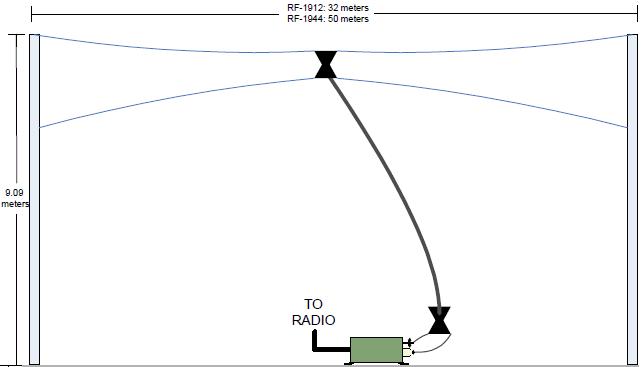This summarizes a selection of applications for the Experimental Radio Service received by the FCC during July and August, 2012. These are related to medium-frequency communications, meteor radar, space-to-space communications, UAV communications, synthetic aperture radar, TV white space, 600 MHz LTE, disaster communications, cellular content caching, GSM, passive intermodulation distortion, ultra-wideband, TDD, ground-mapping radar, Doppler radar, and ground surveillance radar. The descriptions are sorted by the lowest frequency in the application.
Archive for the ‘Amateur Radio’ Category
Experimental radio applications at the FCC
Sunday, September 9th, 2012Experimental Radio Applications at the FCC
Sunday, February 5th, 2012This summarizes a selection from 215 applications for the Experimental Radio Service received by the FCC during October, November, and December 2011. These are related to AM broadcasting, FM broadcasting, spread spectrum on HF and VHF, unmanned aerial vehicle control, electronic warfare support, small satellites, white space technology, video production, managed access, TV interference, RFID, and radar. The descriptions are listed in order of the lowest frequency found in the application.
Experimental Radio Applications at the FCC
Sunday, November 6th, 2011This summarizes a selection from 173 applications for the Experimental Radio Service received by the FCC during August and September 2011. These are related to long-range low-frequency radar, amateur radio, shortwave data, wireless microphones, single-sideband, mine detection, millimeter-wave communications, signal intelligence, automotive radar, satellite feeder links, meteor-burst communications, aircraft telemetry, white space systems, border security radar, 3G and 4G applications, RFID, wind turbine testing, unmanned aerial vehicles, spacecraft telemetry and control, aircraft passenger broadband, and autonomous aircraft landing systems. The descriptions are sorted by the lowest frequency found in the application.
Experimental Radio Applications at the FCC
Saturday, August 14th, 2010This summarizes a selection of applications for the Experimental Radio Service received by the FCC during July 2010. These are related to high-frequency data, military communications, environmental data collection, synthetic aperture radar, WiMAX, sensor networks, interference-resistant communications, LTE, rail transportation, air traffic control, white space networks, and RFID.
- Harris filed an application (with supporting exhibits) for experimental license to operate on various frequencies between 3 and 15 MHz to test an experimental high-frequency wideband waveform that is intended to operate at either 12 kHz bandwidth or 24 kHz bandwidth to allow faster data transfer via high-frequency communications.
- Harris also filed an application (with supporting exhibit) for experimental license to operate on 4.94-4.99 GHz in support of development of US Army’s Warfighter Information Network: Tactical (WIN-T) and Future Combat Systems (FCS) programs. Equipment is to consist of the HNRe2 Highband Network Radio, manufactured by Harris. Harris says the HNRe2 is comprised of four elements: 1) the Baseband Processing Unit, 2) the Highband RF Unit (HRFU), 3) an Inertial Navigation Unit (INU), and a GPS device. The HRFU further consists of an upconverter, a High-Powered Amplifier (HPA), a Switched Beam Antenna (SBA), a Low-Noise Amplifier (LNA), and a downconverter). The test network will consist of five fixed nodes and one mobile node. The FCC has asked Harris to justify extended testing in a band that is primarily allocated for non-government public safety use.
- Canon U.S.A. filed an application (with supporting exhibits) for special temporary authority to operate wireless devices in support of a private technology and product exhibition from September 1, 2010 through September 3, 2010 at the Jacob K. Javits Convention Center in New York, NY. Canon is planning to import many wireless devices from Japan to be used with displays during the exhibition. These devices are not FCC compliant and not expected to be FCC compliant until after the exhibition. Frequencies requested include 315.0-315.7 MHz, 2.40-2.50 GHz, 5.18-5.67 GHz, and 61.6-62.5 GHz. This application was granted on August 11.
Experimental Radio Applications at the FCC
Thursday, February 11th, 2010This describes a selection of applications for the Experimental Radio Service received by the FCC during January 30 through February 7: surveillance radar, airborne telemetry, mobile services, satellite, and amateur radio.
- Lockheed Martin filed an application (with supporting exhibit) for an experimental license to operate three models of ICx Radar System’s perimeter surveillance radar on 35.5 GHz for R&D and customer demonstrations. This will occur at various locations in the US, but primarily in Syracuse, New York.
- Honeywell filed an application (with supporting exhibits) for special temporary authority to operate in the 1625-1725 MHz range while integrating a new AeroVironment radio with an unmanned aerial vehicle used by the military. A key feature of the radio is that both command and control, as well as video downlink, can be accomplished using the same unit. Operation will be in New Mexico . There is concern about protecting the 1660.5-1668.4 MHz radio astronomy band, and discussions are ongoing.
